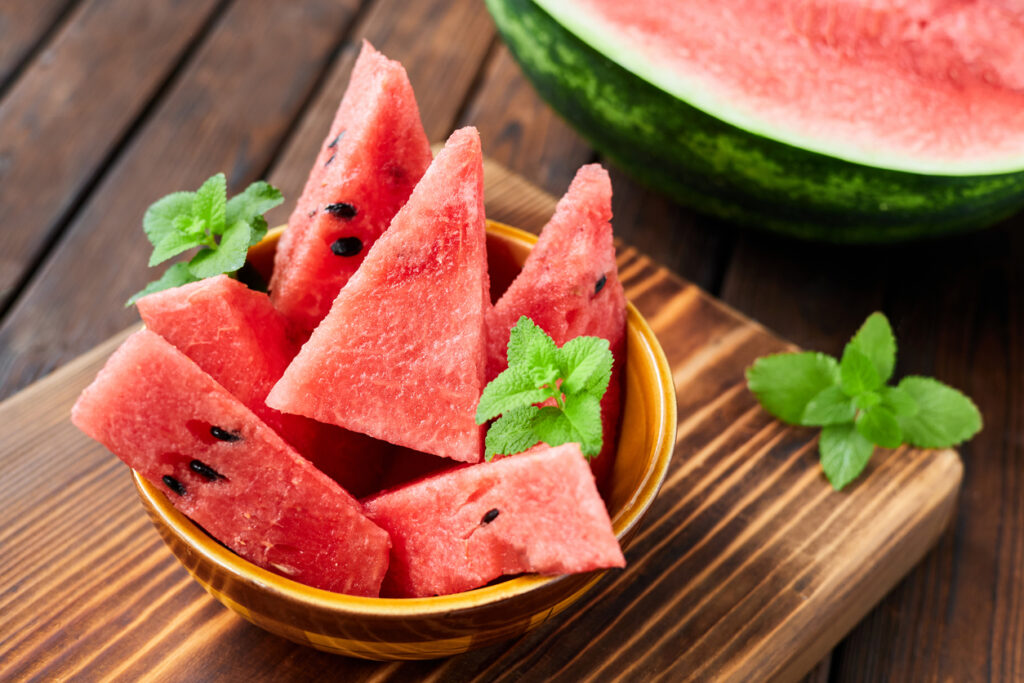It’s watermelon season (May – September) and what better way to celebrate than to learn a little about the history of summer’s favorite fruit. Infamous author Mark Twain said of watermelon, “…when one has tasted it, he knows what angels eat.”
Watermelons have been around for 5,000 years. But centuries of selective breeding have produced the sweet fruit that we know today. Believe it or not, China is the world’s leading producer of watermelons, with the United States ranking seventh, tied with Senegal in West Africa.
Origin of Watermelon
It’s believed that watermelon originated in Northeast Africa around the Kalahari Desert and Sudan. Archeologists even found watermelons depicted in Egyptian hieroglyphics and watermelon seeds were placed in Egyptian tombs so they’d have food for the afterlife. The Yoruba people in West Africa even used watermelons in their spiritual worship.
Watermelons were used as a source of food and water, especially on long journeys where the fruit was used like an ancient canteen. Enslaved Africans were said to have hidden watermelon seeds in their hair for the Middle Passage, so they’d have a familiar food in the new world.
Africans and Spanish colonists are credited with distributing watermelon seeds throughout the eastern part of North America, the Caribbean, and Brazil – a country that has the largest number of African descendants outside of Africa.
During slavery in the United States, Black people charged with working the fields were the ones who had to know how to plant and harvest watermelons. In fact, many enslaved Africans were chosen based on their skills, including farming. During Reconstruction, newly freed slaves became economically independent by selling watermelons and became the largest growers of watermelons among free people.
The Stereotype of Blacks and Watermelon
Sadly, whenever freed Blacks became economically independent, it became a threat to White people. White farmers were so jealous of the success of Black watermelon businesses that they burned many of them down and started ad campaigns to change the narrative about watermelon. The changed narrative, that exists to this day, made it a fruit that only poor Black people ate and for decades has depicted harmful stereotypes about Blacks by portraying them with huge red lips and bugged-out eyes eating watermelon. The result was not only a large decrease in watermelon sales to White customers but even to Black customers.
Today, more than a century later, the stereotype still has an effect. “It let me see how the effects of the mental warfare [from racist Whites] has impacted Black people’s relationship to food, because other cultures all around the world eat watermelon, and they eat it unapologetically,” says James Shields, artist and creator of The Watermelon Couch project. “Yet, there are still African Americans who refuse to eat watermelon because of the stereotype,” he laments.
“I read Shana Klein’s book, ‘The Fruits of Empire: Art, Food, and the Politics of Race in the Age of American Expansion,’” he continues. “The book talks about how America perfected their system of going into other countries and destroying their economies and doing it through agriculture. They started with the Native Americans and then with newly freed African Americans, because we were extremely successful with growing and selling chickens and watermelons, with both being very accessible and affordable to farm.”
By Kalin Thomas



